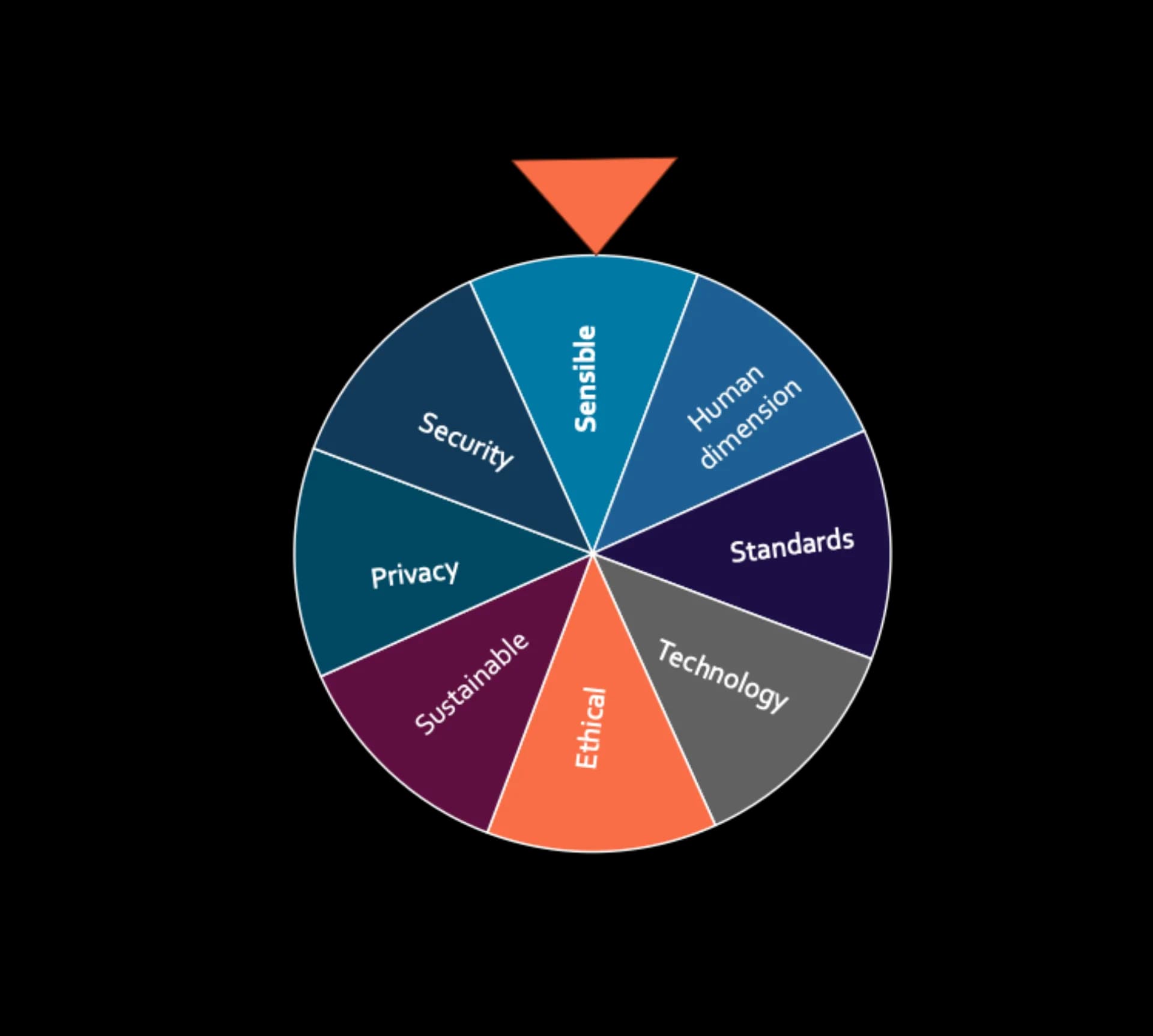Truly valuable services are sensible from the initial design
Our environment demands more and more from (government) service delivery. Service must comply with laws and regulations, restore the human dimension, and be more sustainable. Each organization has its own beliefs and priorities in this regard. This diversity of expectations raises the question, 'How do we make progress at all?'

Sensible-by-design is our vision of how to move from evaluating a solution retrospectively to designing genuinely valuable service that aligns with your organization's beliefs.
So many requirements and standards, but do we still find it sensible?
Quality of service can be viewed from many perspectives. It starts with the question: are we achieving the intended result and thus adding value? This question often forms the core of designing new services.
The subsequent question that arises is: is it permissible, and increasingly, do we want it this way?
The question of whether something is permissible is answered by legislation and standards. When it comes to data sharing, for example, you encounter security and privacy requirements. But you also deal with interoperability standards and requirements related to accessibility and openness of services, such as the Open Government Act (Wet open overheid - Woo).

Sensible-by-design
Whether something should be desired often has a less defined framework. The mission and vision of your organization play a guiding role here. This is true for issues like climate, social sustainability goals, and whether something is seen as ethically responsible. The space for the human dimension, for instance, is a current theme that should guide the services of executing organizations.
If the service does not meet what is permissible and what the organization or environment wants, you risk being called back. This is something you want to avoid when you are aiming to move forward. So, the question is: how do you achieve service without being called back and, preferably, something you can say this is sensible about.
Sensible-by-design as the foundation
Our answer to this is the principle of sensible-by-design: even before the start of a project or program, you create the foundation. The prerequisites, requirements, and your own beliefs form a coherent guiding framework for the design. This framework provides the answer to the question of what your organization or program wants to be responsible for: formally, but also to citizens and society
This goes beyond merely meeting requirements and standards: the guiding framework is a framework that works for you and the citizen, leading to valuable service based on your own beliefs.
Of course, it is not easy to establish such a framework. The mentioned laws are not always straightforward to interpret, beliefs vary, and both can also prove contradictory. Moreover, the environment is constantly changing. Sensible-by-design, therefore, requires an ongoing dialogue between experts and stakeholders in a continuous development process.
In an environment where government organizations face a lot, we aim to jointly approach a problem and find the most suitable solution. This requires an open attitude, being capable of looking beyond one's own expertise. The solution does not start from a single expertise, but benefits from dialogue and evaluation, ultimately leading to the best solution: Sensible and valuable.
Want to know more?
Now you might think: this sounds logical, but how do you apply this principle in practice? We are more than willing to take up this challenge with your organization! Highberg has expertise in all the aforementioned disciplines and can connect them to create an integrated solution.
Related insights
